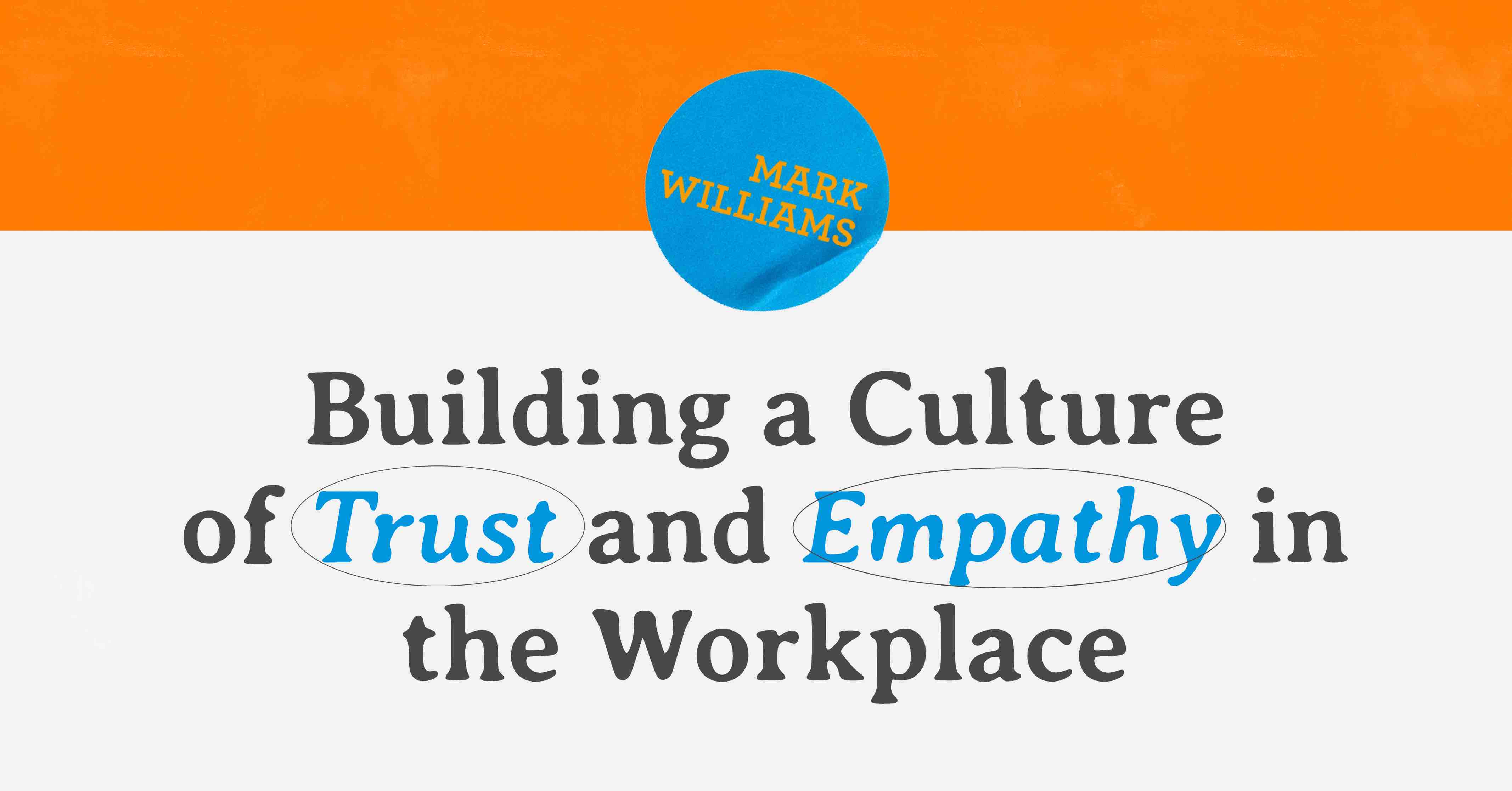In today’s fast-paced and competitive business world, building a culture of trust and empathy in the workplace is not just a lofty ideal – it’s a necessity. A workplace where trust and empathy thrive can lead to increased employee satisfaction, improved teamwork, and ultimately, higher productivity and innovation. But how can organizations foster such a culture? Let’s explore some key strategies to make it happen.
Lead by Example:
Creating a culture of trust and empathy starts at the top. Leaders need to set the tone by showing these qualities in their actions and interactions. When employees see their leaders practicing trust and empathy, they are more likely to follow suit.
Leaders can build trust by being transparent, honest and consistent in their communication. They should also empower employees by giving them autonomy and showing confidence in their abilities.
Empathy, on the other hand, requires leaders to actively listen to their employees, understand their concerns and show genuine care and support. When leaders show empathy, employees feel valued and are more likely to reciprocate this behavior.
Open and Transparent Communication:
Effective communication is the cornerstone of trust and empathy. Encourage open and honest conversations among team members and between employees and leadership. Have regular updates on the company’s goals, challenges and successes. When employees feel informed, they are more likely to trust the organization’s decisions and direction.
Additionally, create channels for employees to express their opinions and concerns. Whether it’s through surveys, suggestion boxes, or regular one-on-one meetings, giving employees a voice fosters a sense of belonging and shows that their perspectives matter.
Establish Clear Expectations:
Ambiguity breeds mistrust and misunderstandings. To build trust, it’s essential to establish clear expectations for roles, responsibilities and performance standards. When employees know what is expected of them and how their work contributes to the organization’s success, they are more likely to feel secure and engaged.
Encourage Collaboration and Teamwork:
Trust and empathy flourish in an environment where employees collaborate and work together toward common goals. Encourage cross-functional teams, brainstorming sessions and team-building activities. When employees see each other’s strengths and challenges, it becomes easier to empathize and support one another.
Invest in Training and Development:
Empathy is a skill that can be developed and honed. Consider offering training programs on emotional intelligence and active listening to help employees better understand and connect with their colleagues. Training can also enhance communication skills, which are crucial for building trust.
Recognize and Reward Trustworthy and Empathetic Behavior:
Recognize and reward employees who consistently demonstrate trustworthiness and empathy. Publicly acknowledge their contributions and efforts to create a positive workplace culture. This not only motivates the individual but also sets an example for others to follow.
Foster Inclusivity and Diversity:
A diverse and inclusive workplace is more likely to foster empathy and trust. When employees from different backgrounds work together and share their unique perspectives, it broadens everyone’s horizons and promotes understanding. Create an inclusive environment where all voices are valued and heard.
Support Work-Life Balance:
Employees are more likely to trust an organization that respects their work-life balance. Encourage flexible work arrangements, provide mental health support and promote a healthy work-life integration. When employees feel that their well-being is a priority, they are more likely to trust the organization and reciprocate with loyalty and commitment.
Embrace Mistakes and Learn from Them:
In a culture of trust and empathy, mistakes are seen as opportunities for growth rather than as failures. Encourage a mindset of continuous improvement and learning. When employees know that they won’t be punished for honest mistakes, they are more likely to take risks and innovate.
Be Patient and Persistent:
Building a culture of trust and empathy takes time and effort. It requires commitment from leaders and employees alike. Be patient and persistent in your efforts, and don’t expect instant results. Celebrate small wins along the way and keep working toward a workplace where trust and empathy are the norm rather than the exception.
A culture of trust and empathy in the workplace is not just a feel-good notion; it’s a strategic advantage that can lead to a more engaged, productive and innovative workforce. By leading by example, fostering open communication and promoting collaboration and inclusivity, organizations can create a workplace where trust and empathy thrive, benefiting both employees and the business. Remember that building this culture is an ongoing process, but the rewards are well worth the investment.
For more leadership insights- check out my new podcast- Balance, Not Burnout available anywhere you listen to podcasts.

